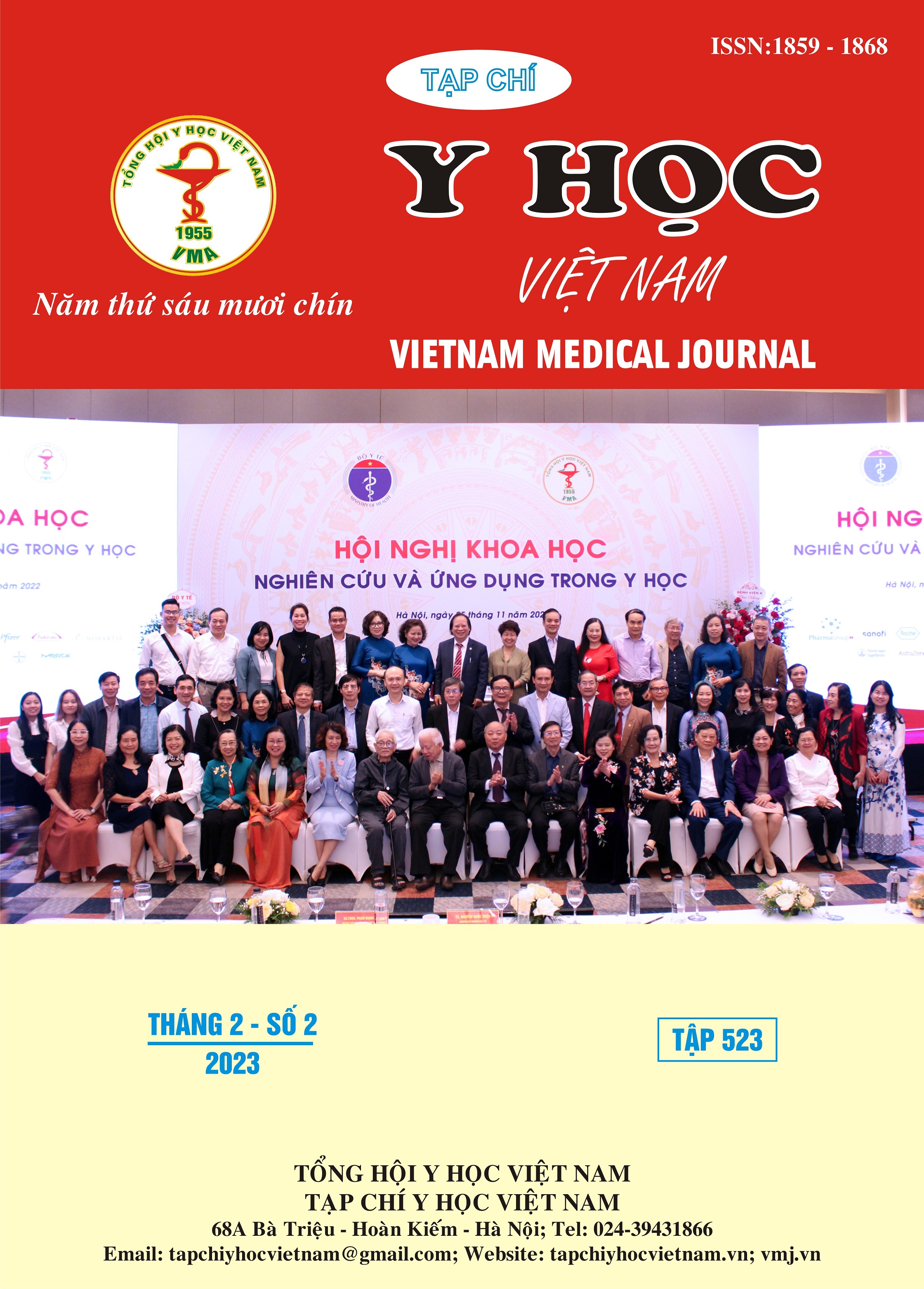PROGNOSTIC FACTORS FOR STAGE III EPITHELIAL OVARIAN CANCER PATIENTS RECEIVED CYTOREDUCTIVE SURGERY AND ADJUVANT CHEMOTHERAPY AT K HOSPITAL
Main Article Content
Abstract
Objects: To determine the prognostic factors for survival and optimal debulking surgery on the stage III epithelial ovarian cancer patients. Methods: Patients with epithelial ovarian cancer stage III undergone the primary debulking surgery and the adjuvant chemotherapy regimens paclitaxel plus carboplatin at the K hospital from January 2015 to December 2019. Clinical and subclinical characteristics, treatment-related variables, progression, recurrence, metastasis and mortality were recorded. Results: 105 eligible patients with epithelial ovarian cancer were analyzed with a median follow-up time of 38 months. The results showed that there was a correlation in overall survival compared with FIGO stage, residual disease, CA125 concentration and HE4 concentration with p test ≤ 0.05. The stage, CA125 level, HE4 concentration, LMR index were significant in predicting primary optimal debulking surgery, with the CA125 cut-off level of 1124 UI/mL with 75.8% sensitivity and 61.7% specificity; the cut-off level of HE4 was 701.5 pmol/L with a sensitivity of 66.7% and a specificity of 78.3%. and the cut-off of LMR was 2.79 with a sensitivity of 54.8% and a specificity of 76.5%. Conclusions: Stage, postoperative residual disease, preoperative CA125 and HE4 concentration are significant prognostic factors for survival in patients with stage III EOC with standard treatment. The combination of factors such as stage, preoperative CA125, HE4, LMR levels proved to be a useful tool to predict optimal surgical ability.
Article Details
Keywords
Epithelial ovarian cancer, Prognostic factors, Optimal debulking surgery
References
2. van Houwelingen JC, ten Bokkel Huinink WW, van der Burg ME, van Oosterom AT, Neijt JP. Predictability of the survival of patients with advanced ovarian cancer. J Clin Oncol. 1989;7(6):769-773. doi:10.1200/JCO.1989.7.6.769
3. Bichel P, Jakobsen A. A new histologic grading index in ovarian carcinoma. Int J Gynecol Pathol. 1989;8(2):147-155. doi:10.1097/00004347-198906000-00008
4. Clark TG, Stewart ME, Altman DG, Gabra H, Smyth JF. A prognostic model for ovarian cancer. Br J Cancer. 2001;85(7):944-952. doi:10.1054/ bjoc.2001.2030
5. Lund B, Williamson P, van Houwelingen HC, Neijt JP. Comparison of the predictive power of different prognostic indices for overall survival in patients with advanced ovarian carcinoma. Cancer Res. 1990;50(15):4626-4629.
6. Vergote I, Tropé CG, Amant F, et al. Neoadjuvant Chemotherapy or Primary Surgery in Stage IIIC or IV Ovarian Cancer. New England Journal of Medicine. 2010;363(10):943-953. doi:10.1056/NEJMoa0908806
7. Kehoe S, Hook J, Nankivell M, et al. Primary chemotherapy versus primary surgery for newly diagnosed advanced ovarian cancer (CHORUS): an open-label, randomised, controlled, non-inferiority trial. The Lancet. 2015;386(9990):249-257. doi:10.1016/S0140-6736(14)62223-6
8. Warwick J, Kehoe S, Earl H, Luesley D, Redman C, Chan KK. Long-term follow-up of patients with advanced ovarian cancer treated in randomised clinical trials. Br J Cancer. 1995;72(6):1513-1517.
9. Malkasian GD, Melton LJ, O’Brien PC, Greene MH. Prognostic significance of histologic classification and grading of epithelial malignancies of the ovary. Am J Obstet Gynecol. 1984;149(3):274-284. doi:10.1016/0002-9378 (84)90227-8
10. Peters-Engl C, Obermair A, Heinzl H, Buxbaum P, Sevelda P, Medl M. CA 125 regression after two completed cycles of chemotherapy: lack of prediction for long-term survival in patients with advanced ovarian cancer. Br J Cancer. 1999;81(4):662-666. doi:10.1038/ sj.bjc.6690744


